Seriously? I can't even say "H-E-L-L yeah"?And the wannabe rednecks are saying "there's a tractor forum?!?! **** yeah!"

Seriously? I can't even say "H-E-L-L yeah"?And the wannabe rednecks are saying "there's a tractor forum?!?! **** yeah!"

I spend a LOT of time there.And the wannabe rednecks are saying "there's a tractor forum?!?! **** yeah!"
Not sure at all. Ultimately emptied half the water, vacuumed out a total of three 50-gal trash bags of debris and dead algae, then refilled. Removing 40,000 gallons of water was just too big of a risk for my taste. Will return to update photos and fuller description of effort soon. Thank you for the cautions.Are you sure that it will not float?
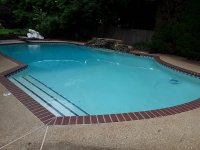

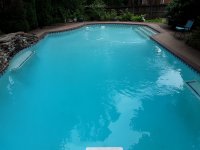

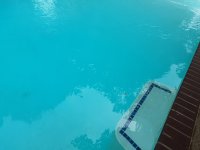
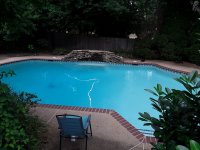
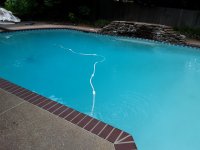
Then you would def hate our AZ pools lolEarly/late are subjective to everyone’s area. Heck, @kellyfair ’s pool is almost too hot for me.
Spoken to several independent pool care operators in the area about SWG. Consensus that a distinct disadvantage of chlorine via Salt Water Generation is it's tendency to promote premature wear in metal parts is apparent among them.The nice thing about TFP is that if you follow the advice of not putting anything in the water except chlorine, there really aren’t any “chemicals” like copper, algaecide, etc being dumped when you drain. Still good to drain to the sewer if possible.
That needs to be proven because there are many here with SWCG for years and they don't have the equipment wear you speak of. We hear plenty of "just chlorine" pools with atleast the same or more equipment problems.Spoken to several independent pool care operators in the area about SWG. Consensus that a distinct disadvantage of chlorine via Salt Water Generation is it's tendency to promote premature wear in metal parts is apparent among them.
Several mentioned different parts are impacted in virtually every component that the water touches.
Having replaced a primary pump, a multi-port controller & an injection dial, I hope to learn some of your experiences with equipment wear.
Had more issues with my old equipment due to previous owners lack of water maintenanceThat needs to be proven because there are many here with SWCG for years and they don't have the equipment wear you speak of. We hear plenty of "just chlorine" pools with atleast the same or more equipment problems.
Thank youYou've come a long way and now on the home stretch. Good Job.


I'm convinced that no better place exists for the debate than right here, in the real world with fellow consumers who pay those repair bills.That needs to be proven because there are many here with SWCG for years and they don't have the equipment wear you speak of. We hear plenty of "just chlorine" pools with atleast the same or more equipment problems.
Tears are 9-10k ppm or about 3 times the salinity of the pool water.The salinity of a pool with a SWCG is about the same or less than that of a tear drop. We're not talking ocean level salt here. Ocean water is 35,000ppm. Salt pool water is 3,500ppm. Not enough to be majorly corrosive. That's my take. Others will weigh in.
Thank youI'd suggest scanning the threads in the Salt Water Chlorine Generators and the Under Construction forums. There's a ton of questions similar to yours. My take was that the salt level isn't high enough to significantly affect anything except the "soft" limestone that is often used by builders here in Texas. See many posts that Texas builders are dead-set against SWGs, but their opposition seems mostly centered on decking materials, not metal. YMMV
Sound advice indeed, for which I am appreciative and will certainly follow.I'd suggest scanning the threads in the Salt Water Chlorine Generators and the Under Construction forums. There's a ton of questions similar to yours. My take was that the salt level isn't high enough to significantly affect anything except the "soft" limestone that is often used by builders here in Texas. See many posts that Texas builders are dead-set against SWGs, but their opposition seems mostly centered on decking materials, not metal. YMMV
This is true & it is also the reason for the creation of TFPC methodology.Philosophy, approaches and lore regarding water chemistry seems as vast as the numbers of people personalities


